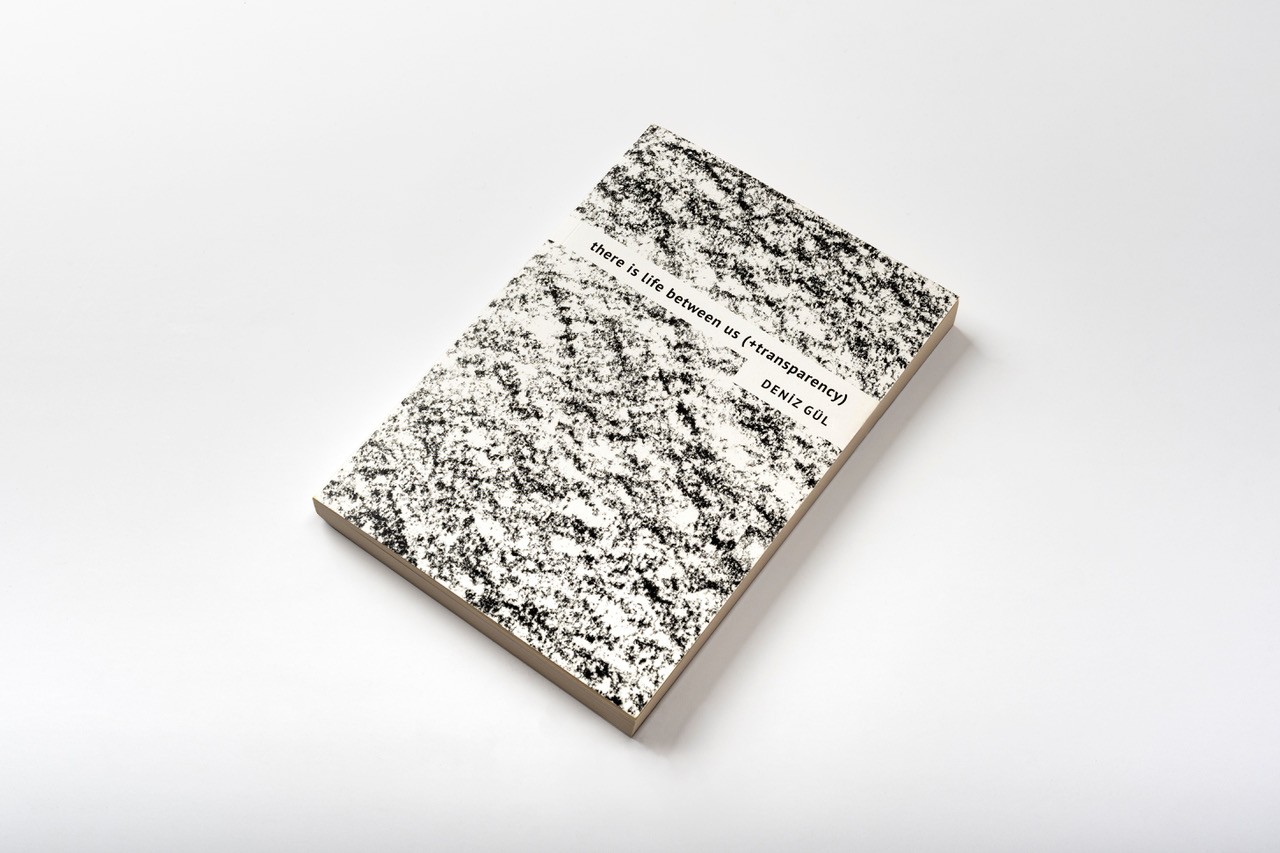
there is life between us (+transparency)
Language:
English
Editor:
Kevser Güler
Copy Editor:
Matt Hanson
Translator:
Rana Kelleci, Deniz Gül
Designer:
Ömer Ozan Erdoğan
Cover Image:
Ezgi Tok
Final Reading:
Andrew Bell
Size:
200 x 140 mm
Pages:
172
Format:
softcover
Color:
Black
Paper:
90 gr.
Cover:
300 gr.
Binding:
American Binding
Publisher:
notonlypublications
Buy
What is the gaze of philosophy? How do we see through it?
there is life between us (+transparency) is a weave of essays in dialogue with theoretical approaches to the scientific, ecological, and artistic implications of transparency as an overarching concept by which to think critically about the world today.
In 40 fragments, spanning from the Feldenkrais method to Bergsonian thought and many others, Deniz Gül explores the concept of transparency by deconstructing the Eurocentric male dominant gaze.
A concise and poetic meditation on materiality and consciousness.

“The only way out is to land. To the surface. To the skin of the earth (+terresterial). How? Through introspection. Through Latour’s oligopticon, Calvino’s Carruga, Feldenkrais’ self-image, Deleuze’s difference, Agamben’s identity without person, Martin’s flaws, Nauman’s bounces, Sıtkı Baba’s düş oluş (becoming a dream)… With Rumi’s whirl, Arachne’s web, Deligny’s wandering lines, Michaux’s fractals…”
English edition is printed in collaboration with Kunstverein Publishing (Milano)

More on the author
Gül experiments on the line between the construction and the deconstruction of boundaries, narratives, identities, and forms. In her practice she utilizes the concept of time, as Gül’s objects, subjects and narratives perform and unfold themselves through time. They are markers and residues of events rather than establishing structures. Lately the artist questions agency in her texts. Where do we start and end as human agencies? Who are or what is performing?
Gül is interested in the interrelationality of passages. Thought forms, concepts and language are a whole body of thread in Gül’s work. Although in line with conceptual and abstract thinkers, Gül is more a poet for creating spaces, movement, color, and images in her texts, and she is a strong voice speaking on the queerness of object and subject-hood. She performs language in the sense that of a genre bender, as most of her writing become sculptures, sound, performances etc.